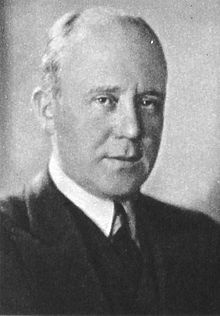|
Rune Carlsten
Rune Carlsten (2 July 1890 – 12 October 1970) was a Swedish actor, screenwriter and film director.[1][2][3] BiographyCarlsten studied at Stockholm University from 1908 to 1910, was involved with Einar Fröberg's theater company from 1910 to 1912, at the Swedish Theater in Stockholm from 1912 to 1913, at the Swedish Theater in Helsinki from 1913 to 1914, at the Intimate Theater from 1914 to 1921, at Filmindustri AB Skandia from 1918 to 1921, at Djurgårdsteatern from 1917 to 1921 and from 1924 to 1925, at Lorensbergsteatern in Gothenburg from 1921 to 1924, at Bonnierfilm in 1924, at AB Alb. Ranft's Theater from 1925 to 1926, at the Oscar Theater from 1926 to 1932, at Paramount in Paris from 1929 to 1932, at Finlandia Film (House of Silence) in Helsinki in 1933, at Jarfilm in Oslo in 1932, at the Comedy Theater from 1932 to 1933, at Ufa in Berlin in 1933, and at Rosenbergsatelier in Vienna in 1938.[4] As early as 1919, he gave an acclaimed performance as Carlsson in the first film adaptation of the people of Hemsö.[5] In 1933 he was engaged at Dramaten, where he worked as both an actor and director. Here he staged, among other things, Hjalmar Söderberg's play Aftonstjärnan. He was involved in the first Swedish experiments with speech film around 1930. Rune Carlsten was affiliated with Radiotjänst from 1930 and was a board member of Drottningholmsteatern's Friends. In 1942, Carlsten made an acclaimed film adaptation of the recently deceased Hjalmar Söderberg's novel Doktor Glas, in which he appeared as a screenwriter, director, and actor.[6] Rune Carlsten was the son of the wholesaler Eric Carlsten and Hilma Maria Herdin. During the years 1916–1923, he is married to the actress Anna Peréus. From 1925 he was married to the actress Dora Söderberg and the father of the actor and director Rolf Carlsten. Carlsten is buried at the Northern Cemetery in Stockholm.[7] Selected filmography
References
Bibliography
External links
|
||||||||||||
